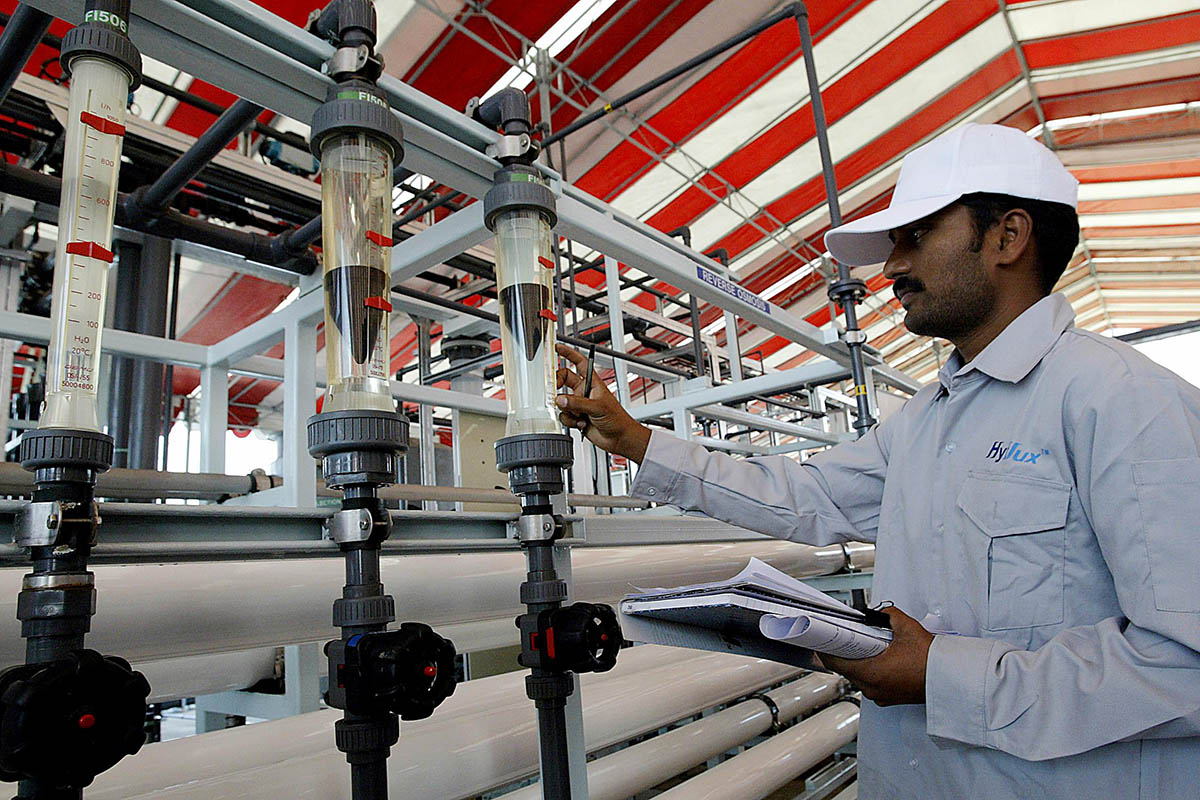The importance of safe, sanitised water is key to a country’s development. The logic behind this is simple – if a nation tries to deliver better health to its growing population, without regard for its natural resources, it will not only face a struggle to make forward strides; but could even experience a reversal in the progress that has already been made. This is where the relationship between water services and a healthy, sustainable ecosystem comes into play.
In 2015, the Water Resources Institute (WRI) ranked Singapore as one of the most water-stressed countries in the world. It also stated that Singapore would be one of eight countries in the world most vulnerable to disruptions in water supply by 2040.
Singapore’s water strategy
Singapore’s water currently comes from four sources which is reservoir water, imported water from Malaysia, high-grade reclaimed water - branded NEWater in Singapore - and of course, desalinated water.
Singapore expects its total demand for water to more than double by 2061, which is also when its remaining water agreement with Malaysia ends.
Currently, Singapore has three parts to its water strategy. Firstly, due to the city-state’s scarceness of land, it works hard to collect every single drop of rain. This means turning as much of Singapore as possible into a water catchment area. To successfully do this, Singapore has to ensure that all its drains, canals and waterways are kept clean all the time.
Secondly, Singapore reuses water endlessly. This means that, water is continuously treated so it can be used again. Every drop of sewage is turned into potable water again through recycling. Recycling water is the most sustainable and cost-effective way to increase water supply, and it also does so exponentially.
Singapore’s third water strategy is turning seawater into drinking water through desalination technologies since there is plenty of water surrounding the island republic. Desalination plays a strategic role in Singapore’s vision for a diversified and sustainable supply of water, and is expected to meet up to 30 per cent of its water demand by 2060.
Singapore’s dual-mode desalination plant
As announced mid last year, Singapore is currently in the process of building the world’s first dual-mode desalination plant which will also be their fourth desalination plant.
The first of its kind in Singapore, the Keppel Marina East Desalination Plant will be delivered under a Design, Build, Own and Operate (DBOO) model as a large-scale dual-mode desalination plant that can treat both, seawater and freshwater.
The DBOO project, initiated by the Public Utilities Board (PUB), Singapore’s national water agency, will produce approximately 30 million gallons of fresh drinking water a day, when completed by 2020.

As a dual-mode facility, the plant will be able to treat either fresh or sea water, depending on wet or dry weather conditions, which will then reduce plant energy usage when freshwater is abundant.
In a statement to the media, ABB, an international infrastructure builder said that it has won an order from Keppel Seghers Pte Ltd, a subsidiary of Keppel Infrastructure Holdings Pte Ltd to supply complete electrical, instrumentation, automation and control systems for the plant.
The scope of supply includes 66kV gas-insulated switchgears, power and distribution transformers, medium- and low voltage switchgears and drives, control system, remote terminal units, field instruments and analytical systems, AC and DC uninterruptible power supply, emergency diesel generator, bus duct and cabling system, local control cubicles and earthing system.
Apart from that, the plant will also feature a green, public recreational space, including an open green rooftop, which will be linked to the Eastern Coastal Park Connector Network.
Maintaining sustainability and resilience of Singapore’s water
The exacerbation of climate change due to rapid development and urbanisation highlights the need for environmental protection especially when natural resources are involved.
According to PUB’s ‘Our Water, Our Future’ report, Singapore is forecasted to become hotter and experience more extreme downpours and dry spells if global emissions remain unchecked. Because of this, Singapore has already started preparing for the worst to come. For instance, the Inter-Ministerial Committee on Climate Change was established in 2007 to coordinate climate change policies.
Some steps towards ensuring sustainability include reducing flood risks, maximising energy efficiency and solar energy. To deploy these measures, PUB develops and installs new technologies to minimise energy use from existing and new treatment processes. When used water is being treated, PUB recovers biogas which can also be used to generate electricity.
Other measures that should also be considered would include changing consumer attitudes and water conservation on a societal level. Household and non-domestic behaviour should be based on awareness of water ownership as well as an environmental cognizance.
Recommended stories:
